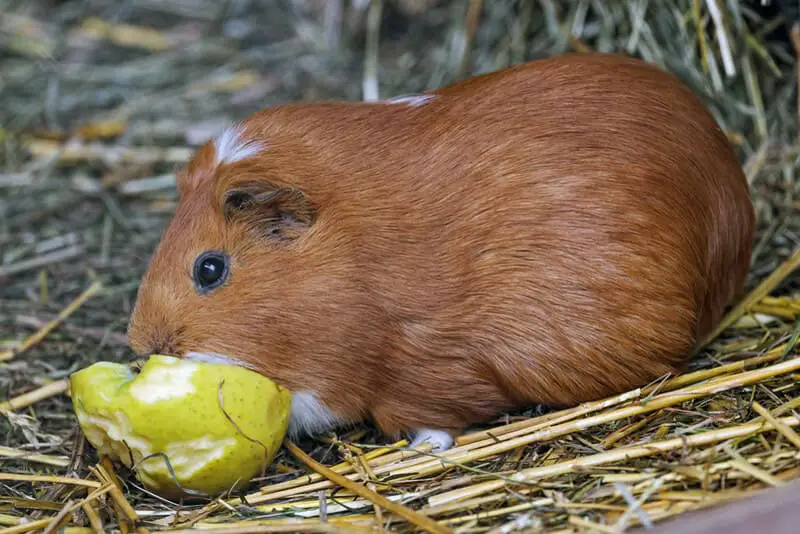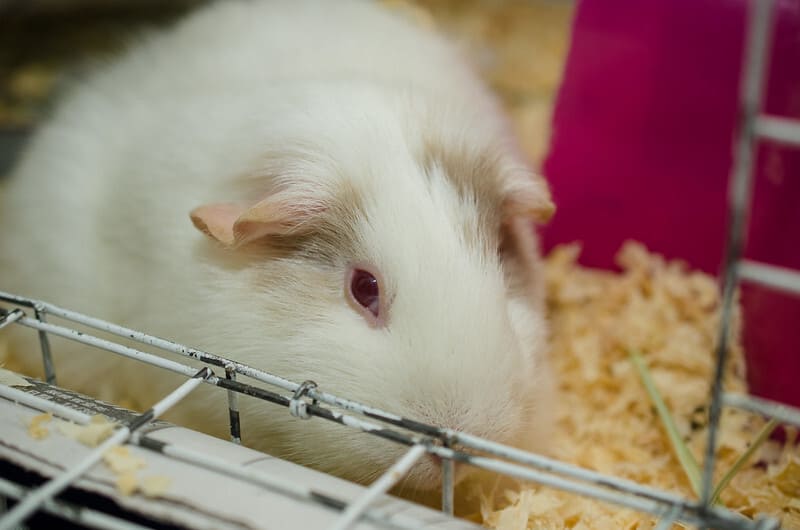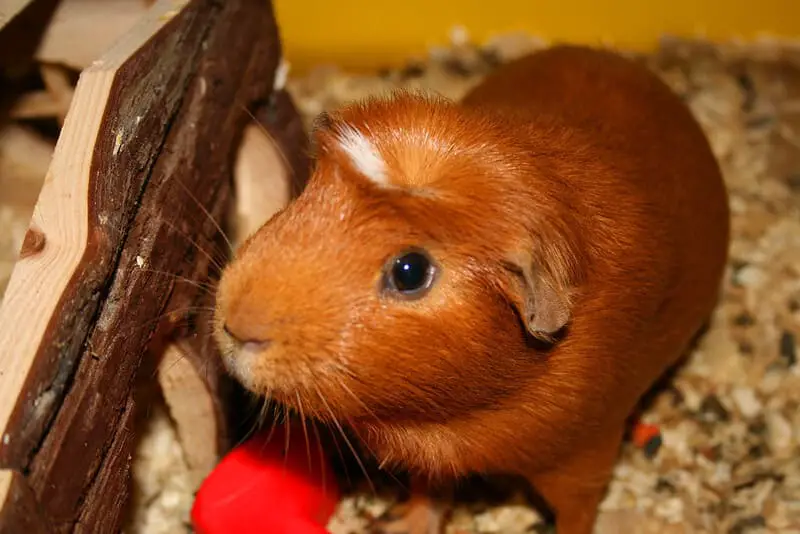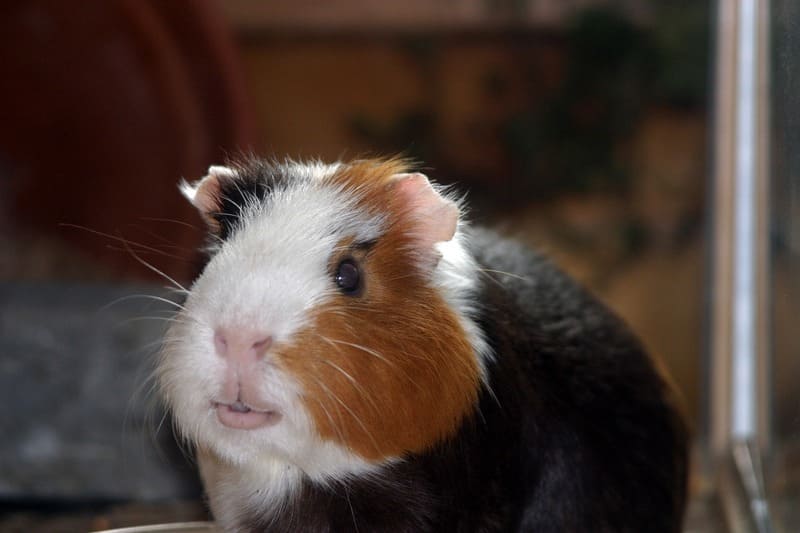Guinea pigs, also known as cavies, make wonderful and popular pets due to their gentle nature and endearing personalities. However, like all pets, guinea pigs require a clean and sanitary living environment to thrive and remain healthy. Regular cage cleaning is an essential part of responsible guinea pig ownership. In this comprehensive guide, we will explore the importance of cage cleanliness, signs that it’s time for a clean, and tips on how often and how to properly clean your guinea pig’s cage.

The Significance of a Clean Cage
Maintaining a clean cage for your guinea pig is not just about aesthetics; it directly impacts your pet’s well-being and overall health. A clean environment contributes to:
- Health and Hygiene: A clean cage minimizes the risk of diseases and infections caused by bacteria or parasites that can thrive in dirty bedding and food remnants.
- Mental and Emotional Well-being: A clean and fresh environment can positively affect your guinea pig’s mental and emotional state. A dirty and odorous cage may lead to stress and discomfort.
- Respiratory Health: Guinea pigs are susceptible to respiratory issues, and a clean cage with fresh bedding helps reduce the risk of respiratory problems associated with dust and odors.
- Activity and Play: A clean, spacious cage encourages your guinea pig to be more active and playful. This is vital for their physical and mental stimulation.
Signs That It’s Time for a Cage Cleaning
While establishing a regular cleaning routine is crucial, you should also pay attention to specific signs that indicate when it’s time to clean your guinea pig’s cage. These signs may include:
Foul Odors
If your guinea pig’s cage starts to emit a strong and unpleasant odor, it’s a clear indication that it’s time for a thorough cleaning. Odors can result from soiled bedding, uneaten food, and waste buildup.
Dirty or Wet Bedding
Inspect the bedding in the cage regularly. If you notice that it is soiled, wet, or clumped together, it’s a sign that it needs changing. Wet bedding can create an unsanitary environment and increase the likelihood of health issues.
Excessive Shedding
Guinea pigs naturally shed hair, but if you notice a significant buildup of fur in the cage, it’s time for a cleaning. Excessive hair in the cage can lead to hygiene issues and contribute to the formation of hairballs.
Presence of Mold or Fungus
Inspect the food and water containers as well as the bedding for any signs of mold or fungus growth. Mold and fungus can be harmful to your guinea pig’s health and must be addressed immediately.
Dirty or Contaminated Food
If you find uneaten food that has become contaminated with urine or feces, it should be removed and replaced with fresh food. Guinea pigs are sensitive to spoiled or contaminated food, and it can lead to digestive issues.
Insect or Parasite Infestations
Unwanted pests like mites or flies can infest a dirty cage. If you notice any signs of infestations, it’s essential to clean the cage thoroughly and address the underlying issue.
Decreased Activity and Appetite
A decrease in your guinea pig’s activity level and appetite may be an indirect sign of discomfort caused by an unclean cage. Guinea pigs thrive in clean and comfortable surroundings, so a noticeable change in behavior should prompt you to clean the cage.

How Often Should You Clean Your Guinea Pig’s Cage?
The frequency of cage cleaning for your guinea pig can vary based on several factors, including the size of the cage, the number of guinea pigs you have, and your guinea pig’s individual habits. Here are general guidelines to help you determine how often you should clean your guinea pig’s cage:
Daily Cleaning Tasks
- Food and Water: Check and replenish food and water dishes daily. Remove any uneaten food to prevent contamination. Ensure that the water supply is clean and fresh.
- Spot Cleaning: Remove soiled bedding, droppings, and wet spots from the cage daily to maintain a hygienic environment. This will help minimize odor and maintain cleanliness between full cage cleanings.
Weekly Cleaning Tasks
- Full Cage Cleaning: Depending on the size of the cage and the number of guinea pigs, perform a thorough cage cleaning once a week. This includes changing all the bedding, cleaning all accessories, and wiping down the cage surfaces.
- Toy and Accessory Cleaning: Wash and sanitize toys and accessories weekly to prevent the buildup of bacteria and germs.
Monthly or As Needed Cleaning Tasks
- Deep Cleaning: Every month or as needed, conduct a deep cleaning of the cage. This involves removing all contents from the cage, cleaning and disinfecting all surfaces, and allowing the cage to air out. Check for any signs of wear and tear, and replace any damaged or unsafe components.
- Cage Inspection: Regularly inspect the cage for any signs of damage, wear, or safety hazards. Ensure that the cage is secure and free from sharp edges or potential escape routes.
- Washing Bedding: Wash and replace fabric or fleece bedding, if used, once a month or as needed. Use a gentle, fragrance-free detergent, and ensure bedding is thoroughly dry before placing it back in the cage.
- Cleaning Accessories: Disassemble and clean all cage accessories such as hideaways, tunnels, and ramps as needed. Remove any chewed or damaged items that may pose a hazard.
Remember that the specific cleaning frequency may vary from one guinea pig’s cage to another. For instance, larger cages may require less frequent full cleanings, while smaller cages may need more frequent attention. Also, if you have multiple guinea pigs, the cage may need cleaning more often due to increased waste production.

Proper Cage Cleaning Procedure
Proper cage cleaning is not only about removing waste but also about maintaining a safe and comfortable living space for your guinea pig. Here is a step-by-step guide on how to clean your guinea pig’s cage:
Gather Your Cleaning Supplies
Before you start cleaning, gather all the necessary supplies:
- Rubber gloves
- A broom and dustpan
- Trash bags or a compost bin for waste disposal
- A vacuum cleaner (with a HEPA filter, if possible) to remove loose debris and hair
- Mild, pet-safe disinfectant or a vinegar-water solution
- Clean, warm water
- A scrub brush or sponge
- A mop or absorbent towels for cleaning the cage base
- Fresh bedding materials
- Clean food and water dishes
- Soap and a scrub brush for cleaning toys and accessories
Preparing Your Guinea Pig
To ensure your guinea pig’s safety and comfort during the cleaning process, place them in a secure and separate enclosure. This can be a small playpen or a portable cage. Ensure they have access to food, water, and a cozy hideaway while you clean their primary cage.
Remove Your Guinea Pig from the Cage
Carefully pick up your guinea pig and transfer them to the secure enclosure. Be gentle and reassure them with a soothing voice to reduce stress.
Empty the Cage
Empty the cage of all contents, including bedding, toys, food dishes, and water bottles. Shake out the bedding and remove any loose debris.
Vacuum or Sweep
Use a vacuum cleaner or broom to remove any loose debris, fur, or hay from the cage’s base. Guinea pigs are known for their prolific shedding, so thorough removal of loose fur is essential to maintain a clean environment.
Wipe Down the Cage
Wipe down all surfaces of the cage, including the walls, ramps, and shelves, with a mild, pet-safe disinfectant or a vinegar-water solution. Make sure to rinse and wipe away any residue to avoid chemical exposure to your guinea pig.
Wash Accessories
Clean all toys and accessories thoroughly with soap and water. Rinse them well to ensure no soap residue remains. Allow these items to dry completely before placing them back in the cage.
Replace Bedding
Once the cage is clean and dry, add fresh bedding material. Ensure that the bedding layer is thick enough to provide comfort and insulation. The type of bedding you choose, whether it’s fleece, paper-based, or aspen shavings, should be appropriate for your guinea pig’s needs and preferences.
Reassemble the Cage
Place all accessories, such as hideaways, tunnels, and ramps, back into the cage. Position food and water dishes in their designated spots and ensure that they are clean and filled with fresh supplies.
Monitor Your Guinea Pig’s Reaction
Upon returning your guinea pig to their freshly cleaned cage, observe their behavior. They may express their happiness with excited squeals and zoomies as they explore their clean and inviting environment.
Dispose of Waste Properly
Dispose of soiled bedding and waste in a trash bag or a compost bin. If you have compostable bedding, you can use it for composting, but avoid adding waste that may contain pathogens or parasites to your compost.

Tips for Easier Cage Cleaning
Cleaning your guinea pig’s cage can be a straightforward and efficient process if you follow these tips:
- Use a Cage Liner: Consider using a washable cage liner, especially if you have a C&C grid-style cage. These liners can make cleaning quicker and reduce the need for frequent bedding changes.
- Spot Cleaning: Regularly remove soiled bedding and droppings to prevent the buildup of waste in the cage, making full cleanings more manageable.
- Invest in Quality Bedding: Choose high-quality bedding material that absorbs moisture and minimizes odors. This can extend the time between full cleanings.
- Multi-level Cages: If you have a multi-level cage, you may not need to clean all levels at once. Focus on the areas most soiled by waste and rotate cleaning different levels.
- Use Pet-Safe Cleaning Products: Always use pet-safe disinfectants or natural cleaning solutions when cleaning the cage and accessories.
- Establish a Routine: Create a cleaning schedule that aligns with your guinea pig’s needs and your own availability. Consistency will help you stay on top of cage maintenance.
- Involve Family Members: If you have family members or housemates, consider sharing the responsibility of cage cleaning to make the task more manageable.
Conclusion
Maintaining a clean and sanitary cage is essential for the health and happiness of your guinea pig. By recognizing the signs that indicate when it’s time for a cleaning and establishing a regular cleaning routine, you can provide your furry companion with a comfortable and hygienic living environment. Remember that the frequency of cleaning may vary depending on the size of the cage, the number of guinea pigs, and their individual habits. By following proper cleaning procedures and using the right supplies, you can ensure that your guinea pig enjoys a clean and safe space, contributing to their overall well-being and happiness.
